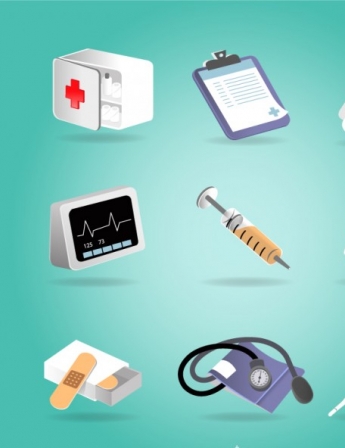As the coronavirus continues to change the way medical equipment and device manufacturers conduct their day-to-day operations, many are looking to new materials to help mitigate viral transmission—all while providing the comfort and durability clients expect in specialized medical products.
What’s more, with global supply chains struggling to operate in a pandemic world, manufacturers are turning to local partners to keep their product design and production workflows in check.
Foam injection molding: A process with a proven track record in the medical equipment industry
In order to overcome the health and safety challenges as well as supply issues brought on by COVID-19, medical manufacturers are turning to foam injection molding processes—particularly those using XL EXTRALIGHT® closed-cell foams—to either develop complete medical equipment or produce components of various medical devices.
Opting for closed-cell foam injection molding is not new to the medical equipment industry; in fact, it has been used for years thanks to its inherent mechanical properties and proven benefits.
Closed-cell foams (and cross-linked foams), like XL EXTRALIGHT®, are firmer than other types of foam because the latter tends to have microscopic “bubbles” that are filled with air. These open-cell foams can be easily damaged because of these bubbles, allowing water, humidity and other harmful substances to enter into the final product.
This material hypersensitivity is not found with closed-cell foams, because, as the name suggests, their cells are completely sealed off. Therefore, XL EXTRALIGHT® is self-skinning, which means it is impenetrable: it is 100% waterproof and helps to keep bacteria and viruses only on the surface of medical equipment or devices. Healthcare workers and sanitary technicians can then easily use even the toughest cleaners on products made with closed-cell foams; they are extremely resistant to soaps and disinfectants required to protect patients and medical professionals against viruses, such as COVID-19.
It is also important to note that the strength of cross-linked foam makes it a compelling solution when developing molded medical devices that are exposed to stressors found in healthcare environments. Think: constant indoor lighting, cracking caused by heavy loads, or persistent handling.
While closed-cell injected foams are very robust and can withstand repetitive use in high-traffic healthcare facilities (hospitals, clinics, testing stations, long-term care residences), medical products developed with injection molded foams nevertheless offer the optimal level of suppleness and comfort required for sick patients.
Medical applications for foam injection molding:
Biocompatible, easy to clean, and durable, close-cell foam is ideal for medical equipment, whether for the home or in healthcare facilities, particularly in a pandemic and post-pandemic world.
But did you know the myriad of medical applications that can benefit from cross-linked foam injection molding? Here are a few examples:
· Components for medical-grade masks, face coverings, face shields and other personal protective equipment (PPE)
· Parts for critical medical equipment, such as ventilators and different types of monitors
· Medical seating, medical seat pads, etc.
In addition, XL EXTRALIGHT® is free of phthalates, heavy metals, vinyl chloride and latex, which makes it very safe and eco-friendly for both patients and healthcare professionals.
Choosing the right foam injection molding partner for the design of medical equipment:
Not all foam injection molding manufacturers are cut out to help product development teams design and product medical equipment. Here is a small checklist to use when talking to potential partners about your next medical device project.
Does the foam injection molding partner:
· Use closed-cell (cross-linked) or open cell foam?
· Have extensive experience in development medical equipment and devices?
· Employ a dedicated team of designers, engineers and technicians?
· Have processes in place to quickly and iteratively product prototypes for medical products?
· Ensure quick turnaround times for medium- to large-volume production runs?
· Guarantee rigorous quality control?
· Allow for flexible MOQ and fast lead times for final products?
· Have plants in North America Europe and Asia to ensure the levels of product quality, customer responsiveness, and streamlined operations—even during the pandemic?
As healthcare professionals and the general public develop new hygiene practices, there is a rich window of opportunity for medical manufacturers to develop hygienically safe products—now and once the current pandemic subsides. By relying on an EVA foam injection mold manufacturer, such as Foam Creations and Finproject, your next medical product project will be developed based on strict safety standards, according to spec and on time!
Other articles about EVA Foam Injection molding:
https://foamcreations.com/en/news/so-what-is-it-about-spa-pillows-everything
Why XL EXTRALIGHT® foam injection molding beats out other foam processes
